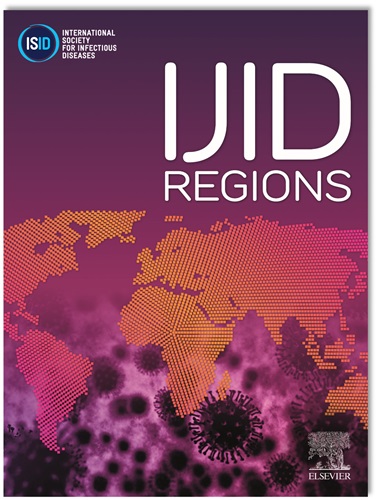一种优化的基孔肯雅病毒反式扩增RNA候选疫苗仅用1 ng抗原编码RNA诱导强效免疫应答
IF 4.8
2区 医学
Q1 INFECTIOUS DISEASES
引用次数: 0
摘要
人类致病性基孔肯雅病毒(CHIKV)已在全球100多个国家引起暴发,并引起了公共卫生关注。由于全球化和气候变化,预计蚊子媒介将进一步传播。CHIKV感染的症状包括发烧、头痛、肌痛、关节炎和关节痛。虽然死亡率相当低,但感染可导致使人衰弱的关节痛,并可能成为慢性的。因此,我们的目标是探索潜在的CHIKV候选疫苗。方法第一代CHIKV候选疫苗基于反式扩增RNA (taRNA),由两种RNA组成:编码CHIKV非结构蛋白形成复制酶复合物的非复制mRNA和编码CHIKV包膜蛋白的反式复制子(TR) RNA。TR-RNA被反式复制酶有效扩增,导致高抗原表达和有效的免疫反应。为了优化我们的taRNA平台,我们现在通过去除亚基因组启动子和重新设计5 '非翻译区,将TR-RNA简化为基本元件。此外,我们用脂质纳米颗粒配制了候选疫苗,并评估了几种修饰。初步增强免疫小鼠后,评估体液和细胞免疫反应。首先,我们可以在体外证明相应的抗原现在可以直接从STR-RNA翻译成正常的mRNA。然而,由于保留了保守的序列元件,STR-RNA被CHIKV复制酶有效扩增。在这里,仅使用包膜蛋白导致高蛋白表达,而添加衣壳蛋白允许释放病毒样颗粒。与在生理盐水中皮内接种相比,我们的候选taRNA疫苗的LNP配方导致抗体滴度提高4.3倍。与之前的TR-RNA相比,STR-RNA诱导抗体滴度进一步增加4倍。在这里,与我们之前的结果相反,所有小鼠都产生了有效的中和抗体反应。重要的是,我们可以大大减少taRNA的剂量。仅用1 ng STR-RNA即可诱导中和抗体,5 ng STR-RNA足以保护所有小鼠免受CHIKV攻击感染。CHIKV在全球迅速传播后,引起了越来越多的公共卫生关注。与mRNA疫苗相比,taRNA平台可以显著减少保护性免疫所需的RNA剂量。然而,taRNA作为人类疫苗的潜力仍需要在临床试验中得到证实。结论taRNA是一种安全有效的新发传染病疫苗接种策略。本文章由计算机程序翻译,如有差异,请以英文原文为准。
An optimized chikungunya virus trans-amplifying RNA vaccine candidate induces potent immune responses with only 1 ng of antigen encoding RNA
Introduction
The human pathogenic chikungunya virus (CHIKV) has caused outbreaks in over 100 countries worldwide and is raising public health concern. Further spread by mosquito vectors due to globalization and climate change is expected. The symptoms of a CHIKV infection include fever, headache, myalgia, arthritis, and joint pain. Although the mortality rate is rather low, infections can result in debilitating arthralgia that can become chronic. Accordingly, we aim to explore potential CHIKV vaccine candidates.
Methods
Our first-generation CHIKV vaccine candidate was based on trans-amplifying RNA (taRNA), consisting of two RNAs: a non-replicating mRNA encoding for the CHIKV nonstructural proteins, forming the replicase complex and a trans-replicon (TR) RNA encoding the CHIKV envelope proteins. The TR-RNA is efficiently amplified by the replicase in trans leading to a high antigen expression and potent immune responses. To optimize our taRNA platform, we now simplified the TR-RNA to the essential elements by removing the subgenomic promoter and redesigning the 5’ untranslated region. Additionally, we formulated our vaccine candidates with lipid nanoparticles and evaluated several modifications. Humoral and cellular immune responses were assessed after prime-boost immunization of mice.
Results
First, we could prove in vitro that the respective antigen can now be directly translated from the STR-RNA as from a normal mRNA. However, as the conserved sequence elements were preserved, the STR-RNA was efficiently amplified by the CHIKV replicase. Here, the usage of only the envelope proteins led to a high protein expression, whereas the addition of the capsid protein allowed the release of virus-like particles. The LNP formulation of our taRNA vaccine candidate led to a 4.3-fold greater antibody titer compared to intradermal vaccination in saline. In comparison to the previous TR-RNA, the STR-RNA induced a further 4-fold increase in antibody titers. Here, in contrast to our previous results, all mice developed potent neutralizing antibody responses. Importantly, we could drastically reduce the taRNA dose. Neutralizing antibodies could be induced with as little as 1 ng STR-RNA and 5 ng STR-RNA were sufficient to protect all mice from a CHIKV challenge infection.
Discussion
The CHIKV is of increasing public health concern after its rapid global spread. In comparison to mRNA vaccines, the platform of taRNA allows to significantly reduce the required RNA doses for protective immunity. Nevertheless, the potential of taRNA as vaccine in humans still needs to be established in clinical trials.
Conclusion
In conclusion, taRNA represents a promising safe and efficient vaccination strategy for emerging infectious diseases.
求助全文
通过发布文献求助,成功后即可免费获取论文全文。
去求助
来源期刊
CiteScore
18.90
自引率
2.40%
发文量
1020
审稿时长
30 days
期刊介绍:
International Journal of Infectious Diseases (IJID)
Publisher: International Society for Infectious Diseases
Publication Frequency: Monthly
Type: Peer-reviewed, Open Access
Scope:
Publishes original clinical and laboratory-based research.
Reports clinical trials, reviews, and some case reports.
Focuses on epidemiology, clinical diagnosis, treatment, and control of infectious diseases.
Emphasizes diseases common in under-resourced countries.

 求助内容:
求助内容: 应助结果提醒方式:
应助结果提醒方式:


